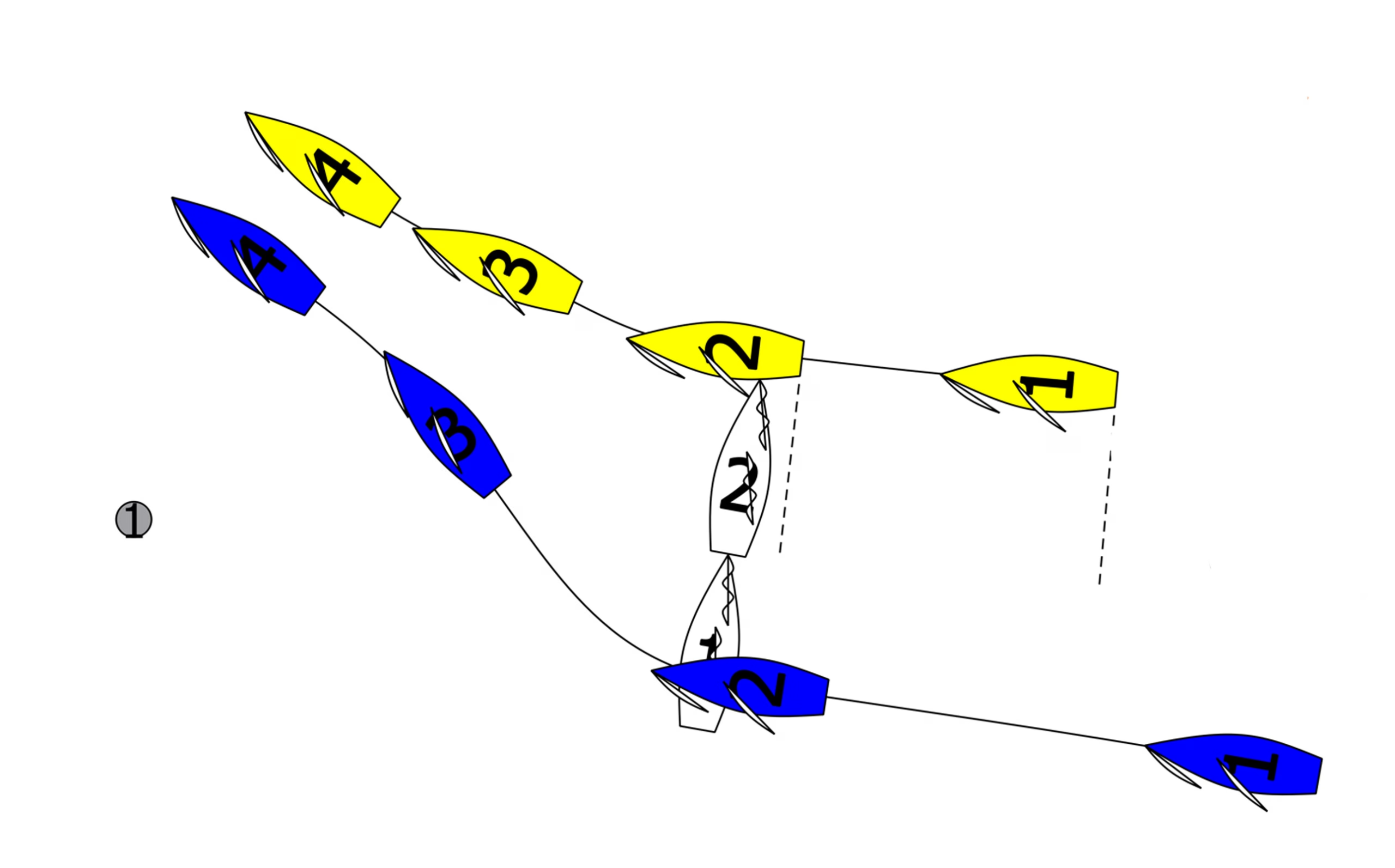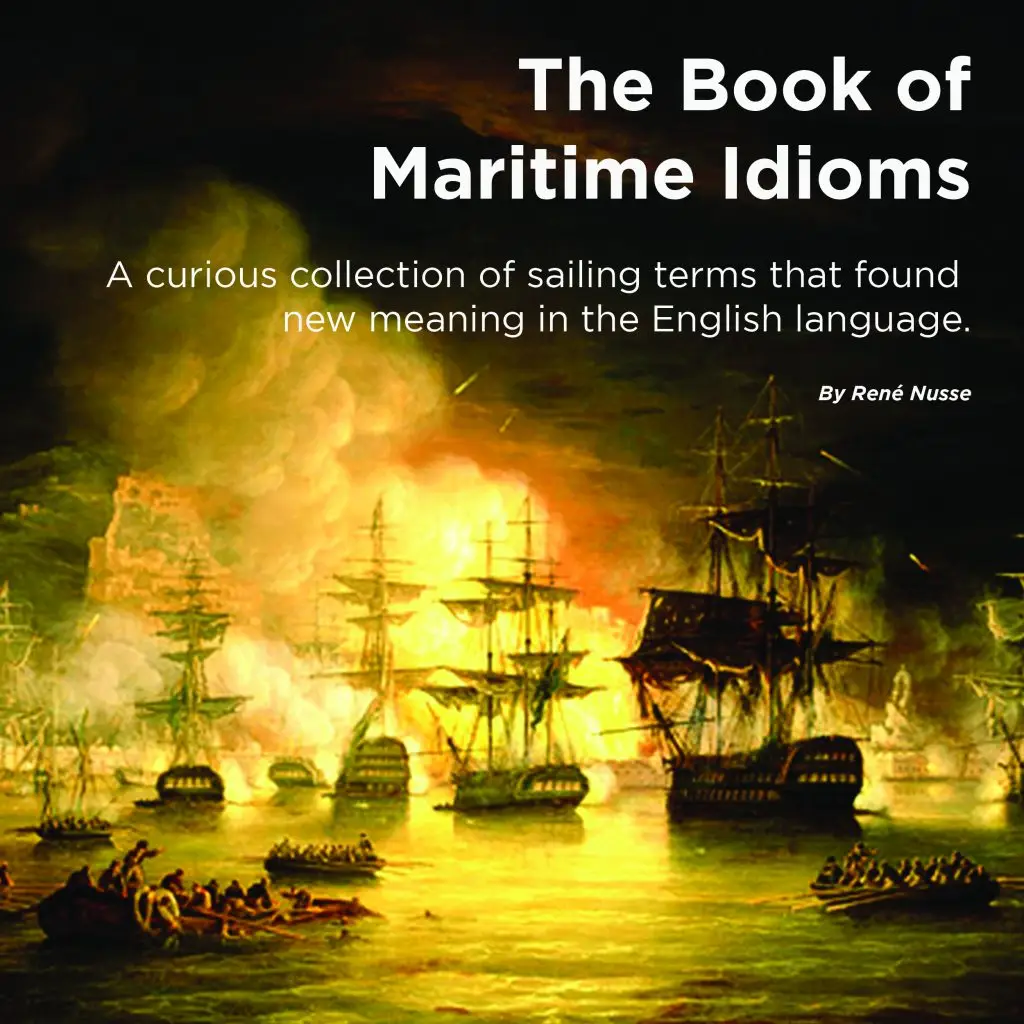Let’s look at what Rule 17 says:
ON THE SAME TACK; PROPER COURSE
If a boat clear astern becomes overlapped within two of her hull lengths to leeward of a boat on the same tack, she shall not sail above her proper course while they remain on the same tack and overlapped within that distance, unless in doing so she promptly sails astern of the other boat.
Rule 17 (On the Same Tack; Proper Course) prevents a boat from unfairly restricting another boat’s ability to sail efficiently when sailing on the same tack.
In example 1 below, you see an illustration of the condition where Rule 17 may kick in. At position 1, Blue is clear astern. Then at position 2, Blue is the leeward boat and has established an overlap, and is within two hull lengths of Yellow (the windward boat).
Under Rule 11, Yellow needs to keep clear of Blue.
However, Rule 17 restricts Rule 11 which we will explore in the second example below…

In example 2, we can see that the criteria of Rule 17 may have kicked in since Blue is coming from clear astern and establishes an overlap on the leeward side of Yellow whilst both boats are on the same tack and where Blue is less than two hull lengths from Yellow.
Both boats need to round the next mark to port before heading on a downwind run. Blue sees an opportunity to frustrate Yellow by heading up. As Blue is the leeward boat, Yellow (the windward boat) needs to keep clear of Blue under Rule 11. However, Rule 11 is “limited” by Rule 17 which states that Blue must not sail above her proper course.
A course a boat would choose in order to sail the course as quickly as possible in the absence of the other boats referred to in the rule using the term. A boat has no proper course before her starting signal.
It is clear from the definition of proper course that Blue is not on her proper course because her proper course would be to round the mark to port and head downwind. Blue instead, is forcing Yellow to sail away from the mark without the ability to turn.
Although Blue is the ROW boat under Rule 11, Blue should be penalised under Rule 17.

The Rundown on Proper Course in Sailing Racing
Definition:
Proper Course
A course a boat would choose in order to sail the course as quickly as possible in the absence of the other boats referred to in the rule using the term. A boat has no proper course before her starting signal.
Key Points About Proper Course:
Not a Mandatory Rule for All Boats
A boat is not always required to sail her proper course unless a rule specifically states it (e.g., Rule 17).
Only Applies in Certain Situations
Rule 17: A leeward boat that gained an overlap from clear astern cannot sail above her proper course (i.e., cannot luff aggressively).
Mark Rounding: A boat entitled to mark-room must not sail wider than necessary under Rule 18.
Proper Course is Boat-Specific
Different boats may have different proper courses based on wind, waves, sail settings, or boat type.
Proper Course is not synonymous with the shortest course.
If you think you see a puff to your right and you want to sail into it to increase boat speed, you are entitled to do so if you would have done so in the absence of the other boat.
Judging Proper Course Can Be Tricky
It’s often a matter of interpretation and is judged based on what a boat would reasonably do in the given conditions.
Summary:
Proper course is about sailing the fastest route to the finish—but boats aren’t always required to follow it unless specific rules (like Rule 17) say so. Proper Course is not synonymous with the shortest course.
Rule 17 key points:
- This rule allows the boat ahead to fairly protect her lead.
- Rule 17 applies to a leeward boat only.
- Overlapped
- Same tack
- 2 hull lengths
- Proper course does not apply to the windward boat.
- Proper course may be different for different boats.
- Proper course – quickest, not necessarily shortest…
- Helps maintain fair and safe competition on the racecourse.
Author
-

Rene is a keelboat instructor and sailing coach in the Mandurah area WA. He is also the author of several books about sailing including "The Book of Maritime Idioms" and "Renaming your boat".
View all posts


